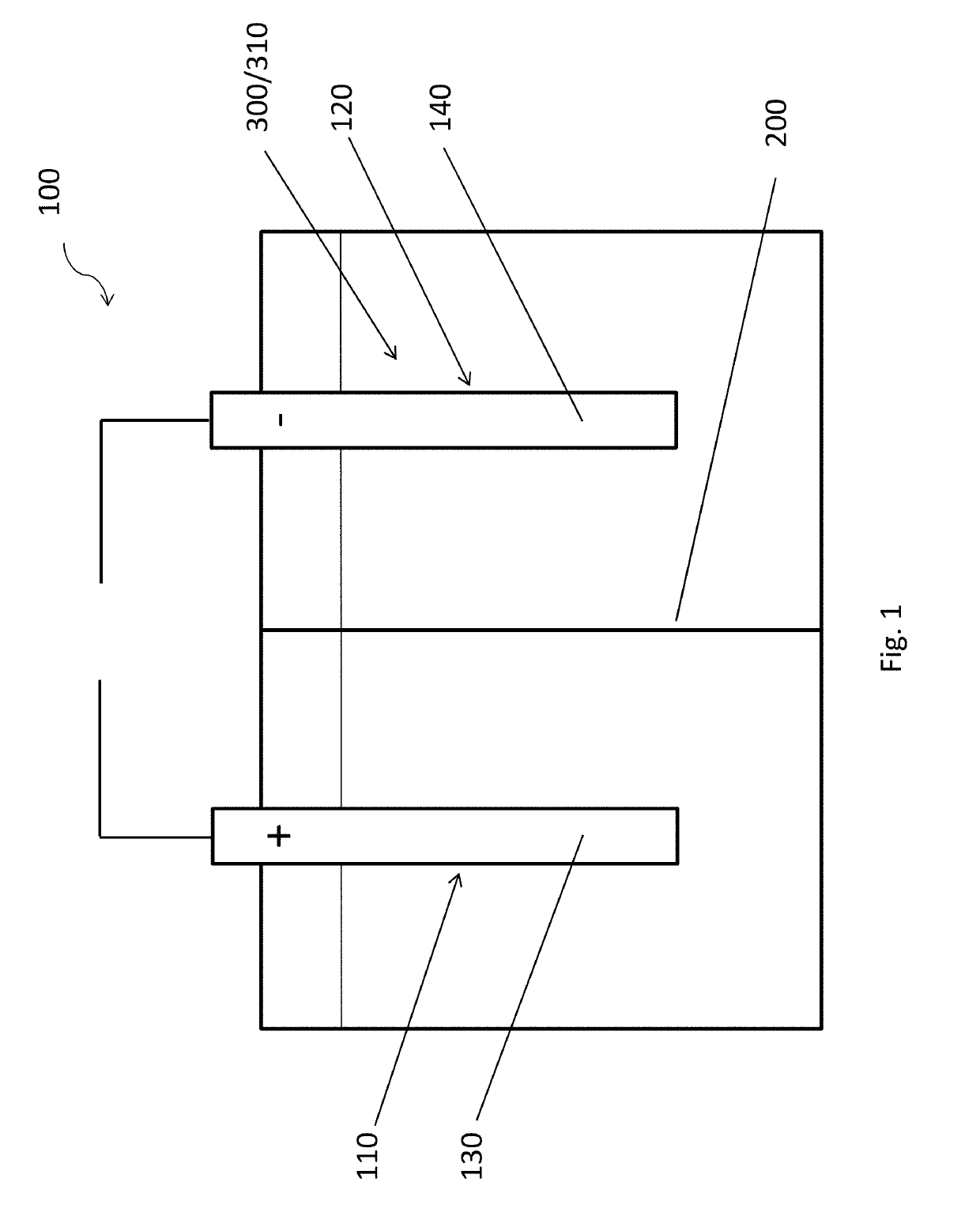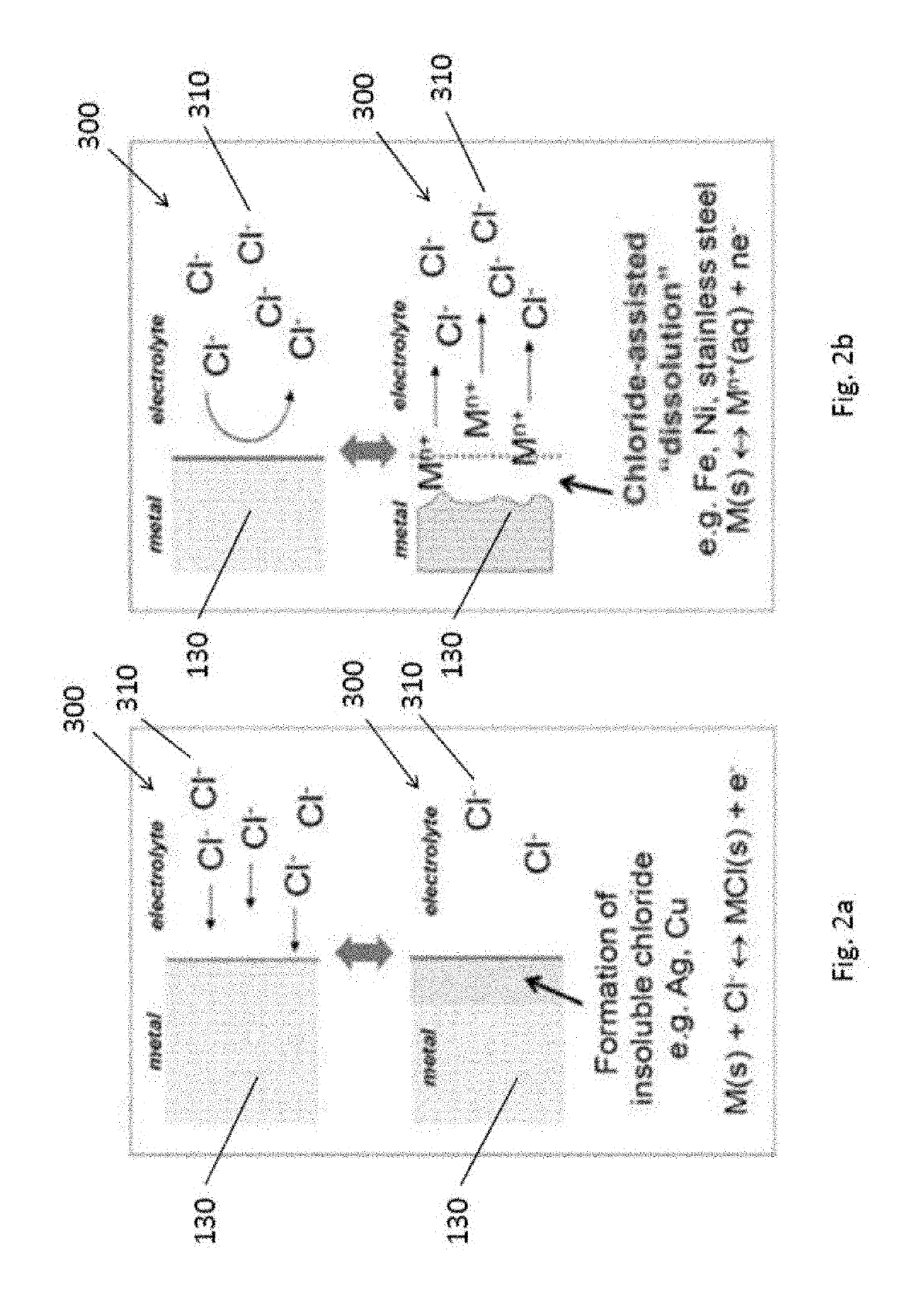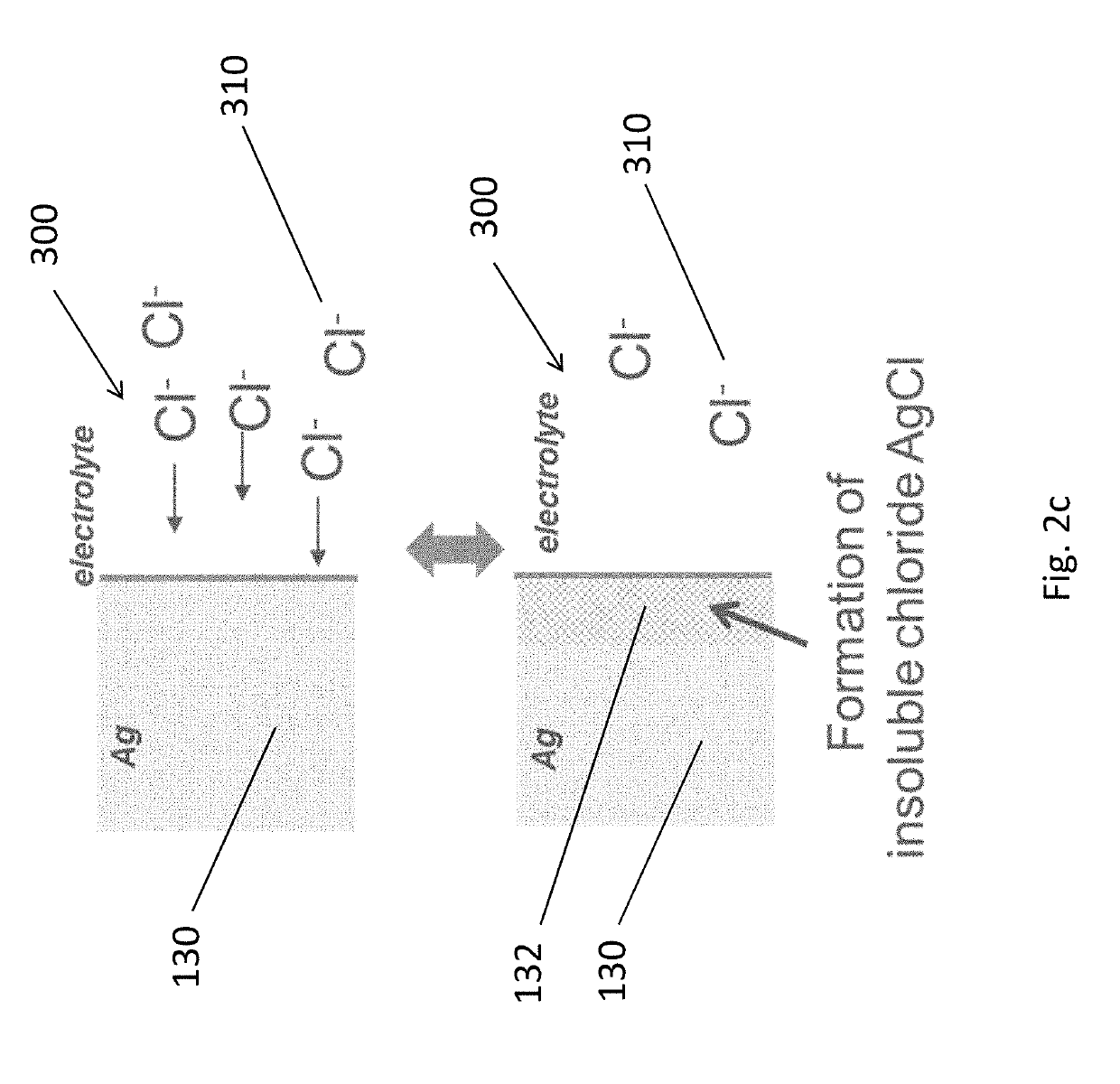Battery system and a method of forming a battery
a battery system and battery technology, applied in the manufacture of secondary cells, cell components, final product manufacturing, etc., can solve the problems of limited rate performance, cycle stability, and occurrence of side reactions, and achieve the effect of facilitating the chemical reaction of the electrode material during charging and/or discharging the battery
- Summary
- Abstract
- Description
- Claims
- Application Information
AI Technical Summary
Benefits of technology
Problems solved by technology
Method used
Image
Examples
Embodiment Construction
[0048]The inventors have, through their own research, trials and experiments, devised that energy density of existing battery technologies, in particular lithium-ion technologies is limited to only about practical energy density of 250 W h kg−1 on the battery level. One of the main obstacles to higher energy density of Lithium-ion batteries (LIBs) is the limited amount of lithium ions that the cathode can hold.
[0049]For instance, LIBs typically use cathode materials such as LiCoO2, LiNi0.8Co0.1Al0.1O2, LiMn2O4, LiNi0.5Mn1.5O4 to store the energy. Traditionally, the cathode material need to contain lithium as there are no other sources of ions in the battery for energy storage. Because of the limited amount of lithium that can be extracted and inserted into the cathode material, the theoretical energy density of these batteries is only below 576 W h kg−1.
[0050]In the present invention, the inventors devised a novel battery system using chloride ions to assist electron transfer during...
PUM
| Property | Measurement | Unit |
|---|---|---|
| voltage | aaaaa | aaaaa |
| voltage | aaaaa | aaaaa |
| size | aaaaa | aaaaa |
Abstract
Description
Claims
Application Information
 Login to View More
Login to View More - R&D
- Intellectual Property
- Life Sciences
- Materials
- Tech Scout
- Unparalleled Data Quality
- Higher Quality Content
- 60% Fewer Hallucinations
Browse by: Latest US Patents, China's latest patents, Technical Efficacy Thesaurus, Application Domain, Technology Topic, Popular Technical Reports.
© 2025 PatSnap. All rights reserved.Legal|Privacy policy|Modern Slavery Act Transparency Statement|Sitemap|About US| Contact US: help@patsnap.com



